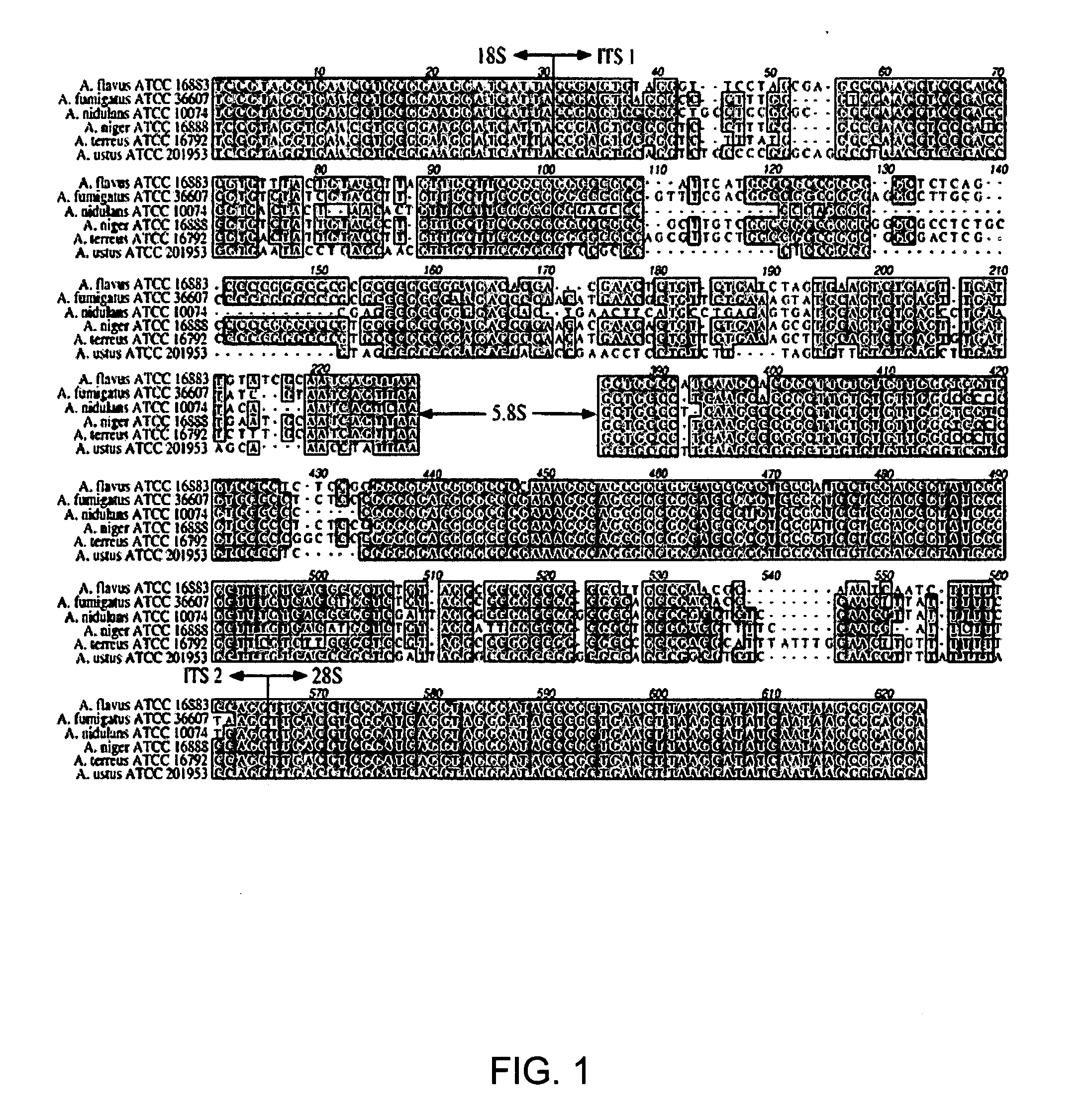Mold infections
a technology of mold infections and fungi, applied in the field of mold infections, can solve the problems that milk production and a full spectrum of blood chemistry and biochemical assets have failed to reveal a consistent clinical correlate to jejunal hemorrhage syndrome, and achieve achieving the effect of reducing the risk of jhs
- Summary
- Abstract
- Description
- Claims
- Application Information
AI Technical Summary
Benefits of technology
Problems solved by technology
Method used
Image
Examples
example 1
Methods
[0101] Samples from nine cows which developed JHS or abomasal hemorrhage (AH) and from several negative control cows were collected. Details of the cases are included in Table 2. Due to the epidemiological nature of the study, consistent samples were not recovered from each farm where JHS was diagnosed. Instead, a mixture of blood, feed and tissues samples were submitted. Tissue samples included gut wall, mesenteric lymph node, cotyledon and liver. Samples from the gut region where hemorrhage occurred were also submitted. The negative control cow samples were blood samples taken from healthy cows (n=14) and three non-JHS dead cows at Pacific Northwest dairies.
B. DNA extraction and SybrGreen analysis
[0102] DNA was extracted from blood, tissues and feeds using the Qiagen QIAmp DNA mini kit. Percent recovery of DNA via the Qiagen method was 80%. A 1 μl sample of DNA was combined with SybrGreen PCR reagents, forward and reverse primers to bring the final...
example 2
Jejunal Hemorrhage Syndrome is caused by Aspergillus fumigatus
[0132] Described herein is the finding that JHS is associated with high levels of A. fumigatus in the gut, gut wall and blood. In human studies, A. fumigatus is recognized for its invasive properties and pathogenicity in immunocompromised patients. These data demonstrate that it has a similar potential in ruminants. However, more than 100,000 fungal species are known, and there are more than 100 Aspergillus species. Only a very small proportion of their ITS domains have been published. Hence, detection of A. fumigatus could include unrecognized (non-sequenced) fungal species. In addition, other predisposing factor(s), for example stress-induced immuno-incompetence, may also contribute to the development of JHS.
A. Development of PCR Assay
[0133] To quantify A. fumigatus in feed, tissues and blood, a “real-time” quantitative PCR assay was developed. The assay was based on the sequences of the fungal ribosomal genes (FIG....
PUM
| Property | Measurement | Unit |
|---|---|---|
| Tm | aaaaa | aaaaa |
| Tm | aaaaa | aaaaa |
| Tm | aaaaa | aaaaa |
Abstract
Description
Claims
Application Information
 Login to View More
Login to View More - R&D
- Intellectual Property
- Life Sciences
- Materials
- Tech Scout
- Unparalleled Data Quality
- Higher Quality Content
- 60% Fewer Hallucinations
Browse by: Latest US Patents, China's latest patents, Technical Efficacy Thesaurus, Application Domain, Technology Topic, Popular Technical Reports.
© 2025 PatSnap. All rights reserved.Legal|Privacy policy|Modern Slavery Act Transparency Statement|Sitemap|About US| Contact US: help@patsnap.com



